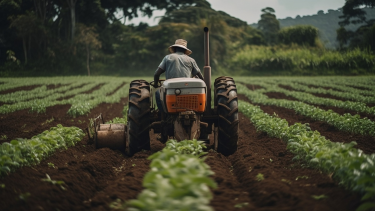Nanobubbles: Revolutionizing Agriculture
Understanding Nanobubbles in Agriculture
In the ever-evolving landscape of agriculture, nanobubbles have emerged as a groundbreaking technology, reshaping the way we approach farming, crop yield optimization, and soil health enhancement. These nanosized bubbles, less than 30nm in diameter, hold immense potential in transforming various facets of agricultural practices, offering a paradigm shift in nutrient delivery, water purification, and crop growth.
The Science Behind Nanobubble Generation
At the heart of this innovation lies the meticulous generation of nanobubbles. Through cutting-edge technology, such as the nanobubble generator, these tiny bubbles, often smaller than the wavelengths of light, are produced. Notably, Japan leads the way in pioneering this patented technology, harnessing the power of nanobubbles to revolutionize not only agriculture but also water purification, mining, and even health benefits.
Enhancing Crop Yields and Soil Health
Nanobubbles have demonstrated remarkable efficacy in bolstering crop yields and fortifying soil health. By infusing irrigation systems with these minuscule bubbles, the oxygen-rich environment created around plant roots stimulates root growth and nutrient absorption. This optimized nutrient delivery system translates into enhanced crop productivity and resilience against environmental stressors, thereby elevating agricultural output significantly.
Unveiling the Potential in Water Purification
Beyond the realm of agriculture, nanobubbles stand as a beacon of hope in the domain of water purification. Their minute size and capacity to carry oxygen make them highly effective in eliminating impurities and pathogens from water bodies. Whether it's ensuring safe drinking water or promoting aquatic health in aquaculture, these bubbles wield transformative potential in purifying water systems.
The Role of Nanobubbles in Sustainable Agriculture
One of the most compelling aspects of nanobubble technology is its alignment with sustainability goals in agriculture. By reducing the dependency on chemical fertilizers and enhancing the efficiency of nutrient delivery, farmers can adopt more eco-friendly practices. Moreover, the improved soil health resulting from enhanced aeration and nutrient absorption contributes to long-term sustainability in farming practices.
The Future of Agriculture with Nanobubbles
As research and development continue to unveil the multifaceted applications of nanobubbles, the future of agriculture appears increasingly promising. With ongoing advancements in nanotechnology for bubble generation, coupled with the collaborative efforts of innovators worldwide, we anticipate further breakthroughs that will reshape agricultural landscapes and empower farmers to achieve greater efficiency and sustainability.
Embracing Nanobubble Technology for Progress
In conclusion, the integration of nanobubbles into agricultural practices represents a pivotal advancement, transcending conventional methodologies and propelling the industry toward unprecedented growth and sustainability. The infusion of innovation and technology, particularly from Japan's patented advancements, underscores the transformative potential of nanobubbles in revolutionizing not only farming practices but also water purification and diverse industrial sectors.
For those seeking to revolutionize their approach to agriculture and explore the transformative potential of nanobubbles, embracing this cutting-edge technology stands as a gateway to maximizing crop yields, optimizing soil health, and contributing to a more sustainable and prosperous future in agriculture.

